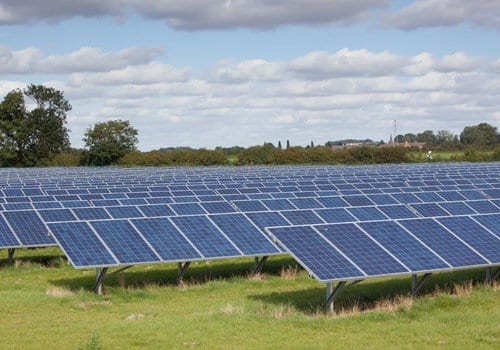One of Victoria’s first large-scale solar PV farms – and one of a growing number of renewable energy projects in Australia that is being developed on a merchant basis, and without a power purchase agreement – has secured $16.5 million in debt funding.
Impact Investment Group, which is bankrolling the 19MW (DC), $32 million Swan Hill Solar Farm, currently under consrtuction in northern Victoria, said on Thursday that it had closed the senior debt facility with specialist fund manager Infradebt.
IIG – whose renewables portfolio is headed up by former Pacific Hydro chief, Lane Crockett – revealed its intentions, in March, to invest $1 billion in renewable energy generation and infrastructure over the coming three years.
In October, it celebrated the formal opening of the 11MW Williamsdale solar farm in the ACT, one of three solar farms contracted by the ACT government at the start of its goal to source the equivalent of 100 per cent of its electricity from renewable energy by 2020.
For Infradebt, the loan represents the first investment for its new Ethical Fund, which was launched in September, backed by a $50 million cornerstone commitment from Future Super, to cater for renewables projects being developed on the merchant market.
The growing number of merchant funded projects appearing in Australia’s large-scale renewables development pipeline reflects the rapidly improving economics of solar and wind energy generation, and a changing of the guard in energy markets. Even as energy policy remains volatile.
As IIG’s Crockett noted in an interview with RenewEconomy in March, this has been particularly the case for large-scale solar projects.
“Solar continues to defy expectations as it continues to fall in cost,” Crockett said. “Not only are equipment costs continuing to fall but the construction market in Australia has become more competitive as contractors become more confident in their delivery methods and costs.”
In comments on Thursday, Crockett said that the new “piece of financing” from Infradebt was a welcome addition to the Swan Hill project, with construction well underway, and completion slated for the second quarter of 2018.
“Swan Hill is another excellent solar asset that will complement our existing portfolio, with a number of other projects expected to complete through calendar 2018,” he said.
Infradebt, meanwhile, says it expects to close further such transactions before the year’s end.
“We have worked closely with IIG to provide a highly customised facility that complements the unique attributes of the (Swan Hill) project,” said Infradebt CEO Alexander Austin.
“We look forward to working with IIG in the future and assisting them with their future development pipeline.”











